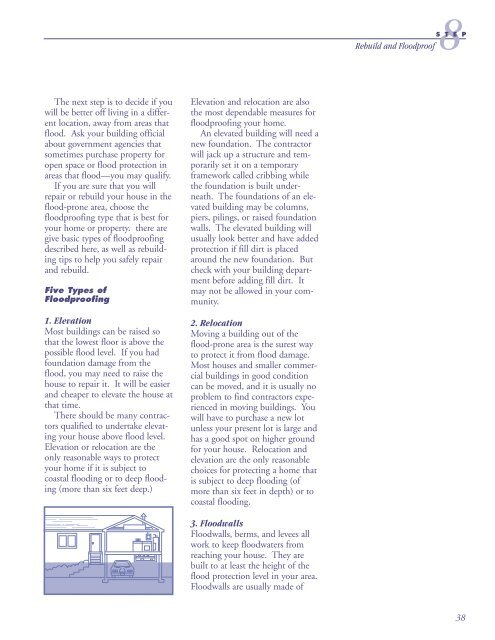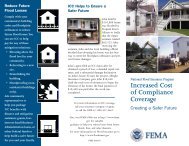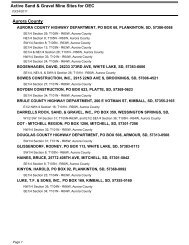Repairing Your Flooded Home PDF - American Red Cross
Repairing Your Flooded Home PDF - American Red Cross
Repairing Your Flooded Home PDF - American Red Cross
- No tags were found...
Create successful ePaper yourself
Turn your PDF publications into a flip-book with our unique Google optimized e-Paper software.
8S T E PRebuild and FloodproofThe next step is to decide if youwill be better off living in a differentlocation, away from areas thatflood. Ask your building officialabout government agencies thatsometimes purchase property foropen space or flood protection inareas that flood—you may qualify.If you are sure that you willrepair or rebuild your house in theflood-prone area, choose thefloodproofing type that is best foryour home or property. there aregive basic types of floodproofingdescribed here, as well as rebuildingtips to help you safely repairand rebuild.Five Types ofFloodproofing1. ElevationMost buildings can be raised sothat the lowest floor is above thepossible flood level. If you hadfoundation damage from theflood, you may need to raise thehouse to repair it. It will be easierand cheaper to elevate the house atthat time.There should be many contractorsqualified to undertake elevatingyour house above flood level.Elevation or relocation are theonly reasonable ways to protectyour home if it is subject tocoastal flooding or to deep flooding(more than six feet deep.)Elevation and relocation are alsothe most dependable measures forfloodproofing your home.An elevated building will need anew foundation. The contractorwill jack up a structure and temporarilyset it on a temporaryframework called cribbing whilethe foundation is built underneath.The foundations of an elevatedbuilding may be columns,piers, pilings, or raised foundationwalls. The elevated building willusually look better and have addedprotection if fill dirt is placedaround the new foundation. Butcheck with your building departmentbefore adding fill dirt. Itmay not be allowed in your community.2. RelocationMoving a building out of theflood-prone area is the surest wayto protect it from flood damage.Most houses and smaller commercialbuildings in good conditioncan be moved, and it is usually noproblem to find contractors experiencedin moving buildings. Youwill have to purchase a new lotunless your present lot is large andhas a good spot on higher groundfor your house. Relocation andelevation are the only reasonablechoices for protecting a home thatis subject to deep flooding (ofmore than six feet in depth) or tocoastal flooding.3. FloodwallsFloodwalls, berms, and levees allwork to keep floodwaters fromreaching your house. They arebuilt to at least the height of theflood protection level in your area.Floodwalls are usually made of38







